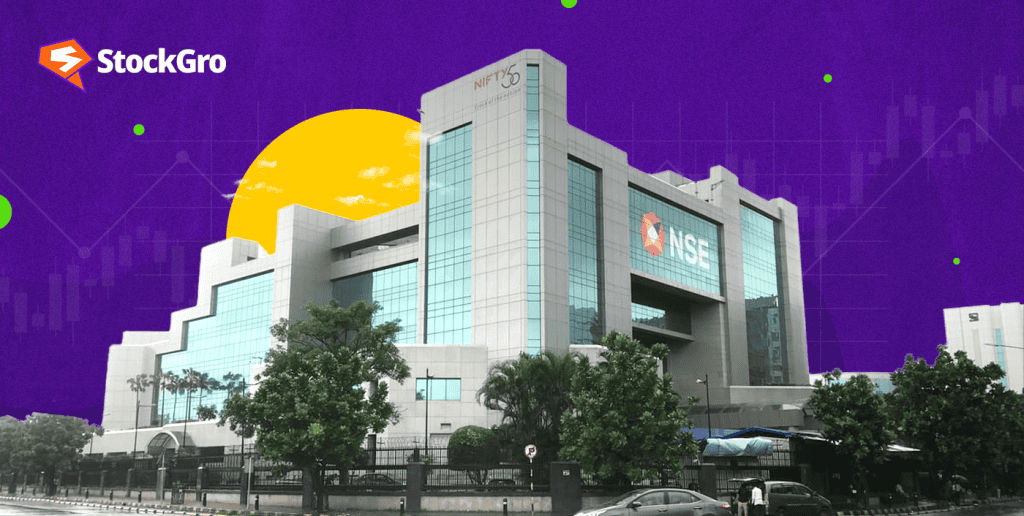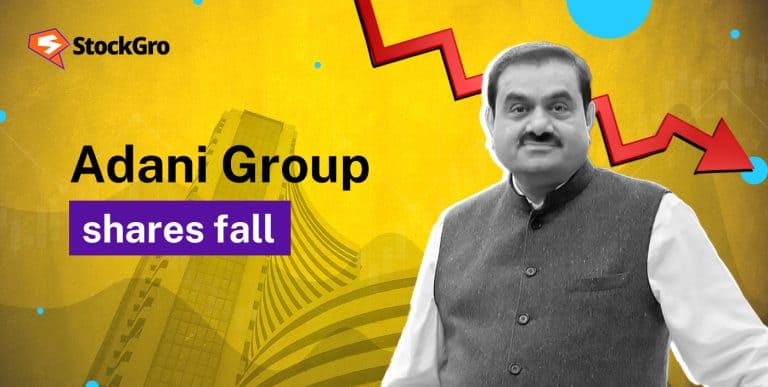
On November 13, 2024, the National Stock Exchange (NSE) issued a circular stating that 45 new stocks will be introduced in the futures and options market with effect from November 29, 2024.
How will this impact the share prices of these stocks? How will it impact the liquidity of existing stocks in the derivatives markets? In the following sections, we will look at the potential implications.
NSE circular details
NSE released a circular on November 13, 2024, regarding the addition of 45 new stocks in the F&O segment. Futures and options are contracts used by traders to hedge their positions or simply for speculative purposes, these instruments are highly leveraged and very risky.
Know more about: Unlocking the power of index futures: A beginner’s guide
These contracts will be available to trade from November 29, 2024. This decision is based on the stock selection criteria as prescribed by the Securities and Exchange Board of India (SEBI) circular dated August 30, 2024, and is approved by SEBI.
This circular also stated that NSE will provide further details about lot size, quantity freeze limit, and scheme of strikes on November 28, 2024.
As per the circular, some notable entrants include Zomato, Jio Financial Services, D-Mart, BSE Ltd, Yes Bank etc. Here is the complete list of stocks:
| Sr no | Symbol | Security Name |
| 1 | ADANIENSOL | Adani Energy Solutions Limited |
| 2 | ADANIGREEN | Adani Green Energy Limited |
| 3 | ANGELONE | Angel One Limited |
| 4 | APLAPOLLO | APL Apollo Tubes Limited |
| 5 | ATGL | Adani Total Gas Limited |
| 6 | BANKINDIA | Bank of India |
| 7 | BSE | BSE Limited |
| 8 | CAMS | Computer Age Management Services Limited |
| 9 | CDSL | Central Depository Services (India) Limited |
| 10 | CESC | CESC Limited |
| 11 | CGPOWER | CG Power and Industrial Solutions Limited |
| 12 | CYIENT | Cyient Limited |
| 13 | DELHIVERY | Delhivery Limited |
| 14 | DMART | Avenue Supermarts Limited |
| 15 | HFCL | HFCL Limited |
| 16 | HUDCO | Housing & Urban Development Corporation Limited |
| 17 | INDIANB | Indian Bank |
| 18 | IRB | IRB Infrastructure Developers Limited |
| 19 | IRFC | Indian Railway Finance Corporation Limited |
| 20 | JIOFIN | Jio Financial Services Limited |
| 21 | JSL | Jindal Stainless Limited |
| 22 | JSWENERGY | JSW Energy Limited |
| 23 | KALYANKJIL | Kalyan Jewellers India Limited |
| 24 | KEI | KEI Industries Limited |
| 25 | KPITTECH | KPIT Technologies Limited |
| 26 | LICI | Life Insurance Corporation Of India |
| 27 | LODHA | Macrotech Developers Limited |
| 28 | MAXHEALTH | Max Healthcare Institute Limited |
| 29 | NCC | NCC Limited |
| 30 | NHPC | NHPC Limited |
| 31 | NYKAA | FSN E-Commerce Ventures Limited |
| 32 | OIL | Oil India Limited |
| 33 | PAYTM | One 97 Communications Limited |
| 34 | POLICYBZR | PB Fintech Limited |
| 35 | POONAWALLA | Poonawalla Fincorp Limited |
| 36 | PRESTIGE | Prestige Estates Projects Limited |
| 37 | SJVN | SJVN Limited |
| 38 | SONACOMS | Sona BLW Precision Forgings Limited |
| 39 | SUPREMEIND | Supreme Industries Limited |
| 40 | TATAELXSI | Tata Elxsi Limited |
| 41 | TIINDIA | Tube Investments of India Limited |
| 42 | UNIONBANK | Union Bank of India |
| 43 | VBL | Varun Beverages Limited |
| 44 | YESBANK | Yes Bank Limited |
| 45 | ZOMATO | Zomato Limited |
What makes a stock eligible for entering F&O
The SEBI has provided some guidelines that dictate how a cash market stock becomes eligible for futures and options markets. In a circular dated August 30, 2024, SEBI updated these guidelines.
Know more about: SEBI’s quasi-powers: Keeping India’s securities market ethical
A stock becomes eligible for the F&O segment when it fulfils these criteria:
- A company’s average daily market capitalization and average daily traded value should be among the top 500 stocks for the last six months, starting on the day of calculation, without skipping even a single day.
- A stock’s median quarter-sigma order size should not be less than 75 lakhs in the past six months on a rolling basis. In other words, to move a stock, a quarter of its standard deviation, a minimum order size (price * volume) of 75 lakhs must be required. Below that it would mean stock is not liquid enough.
- A stock’s market-wide position limit should not be less than 1500 crores on a 6-month rolling basis. This measure is used to check that a stock has enough volumes and no liquidity issue exists.
- On a rolling basis, a stock’s average daily delivery value for the previous six months shouldn’t be less than 35 crores.
Impacts on the market
- Increased liquidity: The futures and options market will experience an increase in liquidity as more equities are introduced. Traders will diversify their positions from pre-existing to new contracts.
This can help stabilise volume across the whole derivatives market. The addition of new stocks will also narrow the bid-ask spread and ensure smoother execution. This will also attract participants who master trading in a specific stock or sector.
- More arbitrage opportunities: Traders will be able to execute complex arbitrage trading strategies like exploiting the price difference between the cash market prices and future contract prices of these stocks.
They can also execute strangles and straddles in these stocks. Suppose a company is about to make an emergency announcement that might be either very good or very bad. In such a case, traders will be able to take a multi-directional position to exploit moves in either direction using derivatives.
Know more about: How does arbitrage trading work?
- Better price discovery: Traders will buy or sell F&O contracts for these stocks through which the sentiment around them can be measured. Suppose market participants are pricing a quarterly loss for a company that would be evident in the rise in put options volume and, stocks will adjust accordingly in the cash segment.
These kinds of analyses are very insightful and useful for an analyst or researcher attempting to predict the future direction of a particular stock or the overall market.
- Institutional Investors: These newly added stocks will attract High-Frequency Trading (HFT) firms, arbitrage traders, hedge funds, etc because these firms view the existence of derivatives as a hallmark of market maturity.
Also, mutual funds and institutional investors always prefer stocks that are in the F&O segment so that they can hedge their positions against any adverse possible scenario, or else they would have to liquidate their entire holdings.
- Increased revenues for exchanges: With the introduction of new stocks in the derivative segment volumes will surely rise. As long as there is a high volume of deals, it doesn’t matter which way the price moves; exchanges profit from brokerage.
Important consideration
SEBI recently introduced a list of changes to reduce the excessive volume and curb excessive liquidity in the index futures and options. These changes became necessary because SEBI noticed that 93% of people, mostly small retail traders, were making losses. So, changes like increasing the contract size, reducing the number of weekly index derivatives, etc. will make it difficult for small players to participate in the derivatives market.
Although made for the good of small traders, the SEBI move would negatively affect exchanges as their revenues will reduce significantly. This might be the main cause, why NSE introduced these new stocks in the derivatives segment.
Since it would be more expensive to trade index derivatives, retail traders will switch to stock derivatives. This will help exchanges balance out the revenue they would have otherwise lost.
The big factor here is that the volatility in index derivatives was limited. The reason being, as compared to stocks, indices are more stable. So, losses were also somewhat limited. Stocks tend to have bigger moves and more volatility than indexes. Thus, a single 8-10% move in a stock (which is quite common) can wipe out the entire portfolio of a retail trader holding a stock derivative.
Bottomline
The decision to add new stocks to the derivatives segment will have positive and negative effects. Revenues for NSE will rise and the price discovery will get better but losses for retail investors may also rise. This may lead to SEBI intervention. But whatever happens, it is definitely a big move and its impacts will be evident soon.

